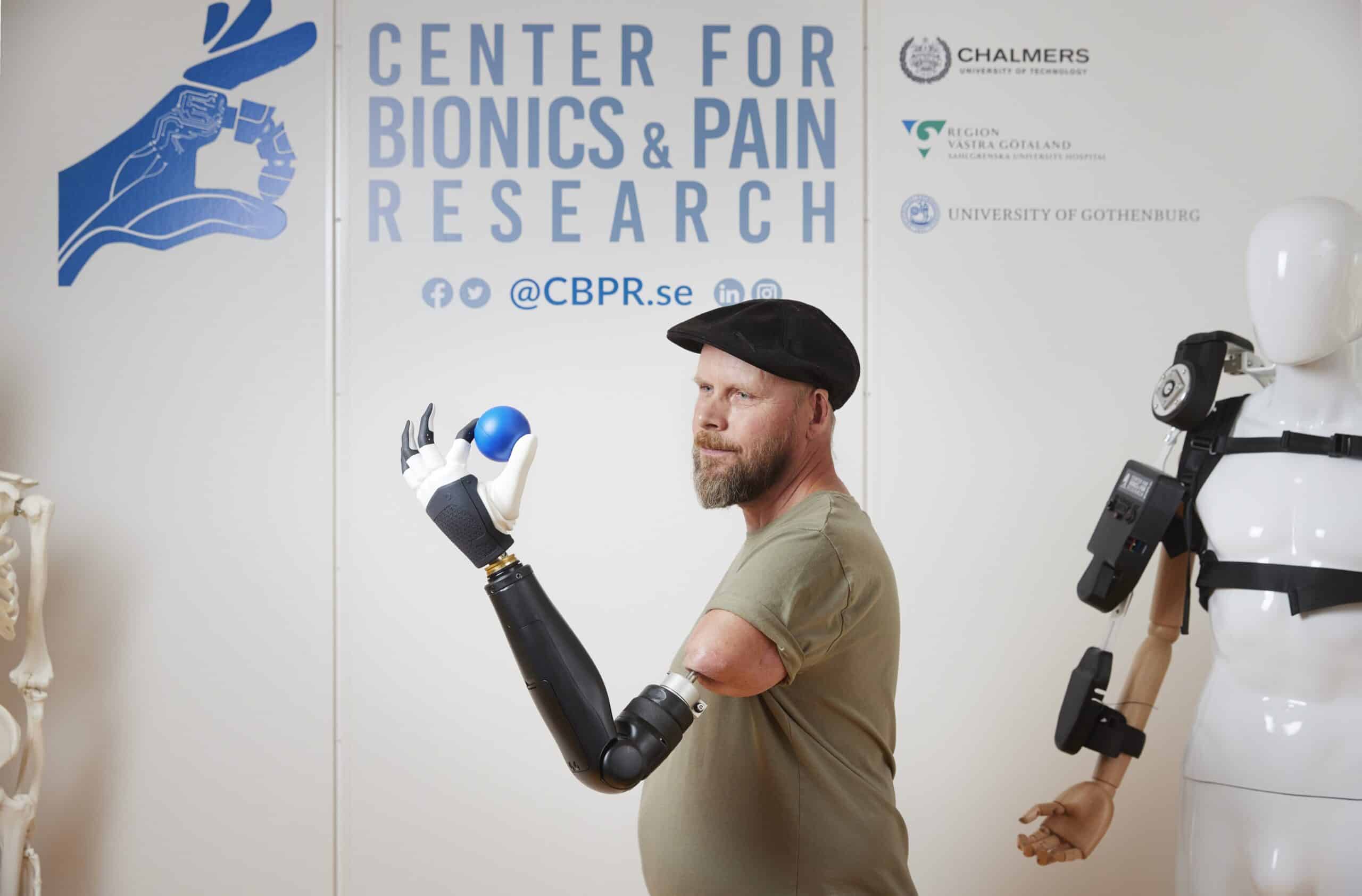Prosthetic limbs are the most common solution to replace a lost extremity. However, they are hard to control and often unreliable with only a couple of movements available. Remnant muscles in the residual limb are the preferred source of control for bionic hands. This is because patients can contract muscles at will, and the electrical activity generated by the contractions can be used to tell the prosthetic hand what to do, for instance, open or close. A major problem at higher amputation levels, such as above the elbow, is that not many muscles remain to command the many robotic joints needed to truly restore the function of an arm and hand.
Control over each finger of a bionic hand at will
A multidisciplinary team of surgeons and engineers has circumvented this problem by reconfiguring the residual limb and integrating sensors and a skeletal implant to connect with a prosthesis electrically and mechanically. By dissecting the peripheral nerves and redistributing them to new muscle targets used as biological amplifiers, the bionic prosthesis can now access much more information so the user can command many robotic joints at will (video: https://youtu.be/h1N-vKku0hg).
The research was led by Professor Max Ortiz Catalan, Founding Director of the Center for Bionics and Pain Research (CBPR) in Sweden, Head of Neural Prosthetics Research at the Bionics Institute in Australia, and Professor of Bionics at Chalmers University of Technology in Sweden.
Rewiring nerves conducive to improved prosthetic control
“In this article, we show that rewiring nerves to different muscle targets in a distributed and concurrent manner is not only possible but also conducive to improved prosthetic control. A key feature of our work is that we have the possibility to clinically implement more refine surgical procedures and embed sensors in the neuromuscular constructs at the time of the surgery, which we then connect to the electronic system of the prosthesis via an osseointegrated interface. A.I. algorithms take care of the rest.”
High level of functionality
Prosthetic limbs are commonly attached to the body by a socket that compresses the residual limb causing discomfort and is mechanically unstable. An alternative to socket attachment is to use a titanium implant placed within the residual bone which becomes strongly anchored — this is known as osseointegration. Such skeletal attachment allows for comfortable and more efficient mechanical connection of the prosthesis to the body.
“It is rewarding to see that our cutting-edge surgical and engineering innovation can provide such a high level of functionality for an individual with an arm amputation. This achievement is based on over 30 years of gradual development of the concept, in which I am proud to have contributed” comments Dr. Rickard Brånemark, research affiliate at MIT, associate professor at Gothenburg University, CEO of Integrum, a leading expert on osseointegration for limb prostheses, who conducted the implantation of the interface.
Single-finger control as well as sensory feedback
The surgery took place at the Sahlgrenska University Hospital, Sweden, where CBPR is located. The neuromuscular reconstruction procedure was conducted by Dr. Paolo Sassu, who also led the first hand transplantation performed in Scandinavia.
“The incredible journey we have undertaken together with the bionic engineers at CBPR has allowed us to combine new microsurgical techniques with sophisticated implanted electrodes that provide single-finger control of a prosthetic arm as well as sensory feedback. Patients who have suffered from an arm amputation might now see a brighter future,” says Dr. Sassu, who is presently working at the Istituto Ortopedico Rizzoli in Italy.
The Science Translational Medicine article illustrates how the transferred nerves progressively connected to their new hosting muscles. Once the innervation process had advanced enough, the researchers connected them to the prosthesis so the patient could control every finger of a prosthetic hand as if it would be his own (video: https://youtu.be/FdDdZQg58kc). The researchers also demonstrated how the system respond in activities of the daily life (video: https://youtu.be/yC24WRoGIe8) and are currently in the process of further improving the controllability of the bionic hand.




